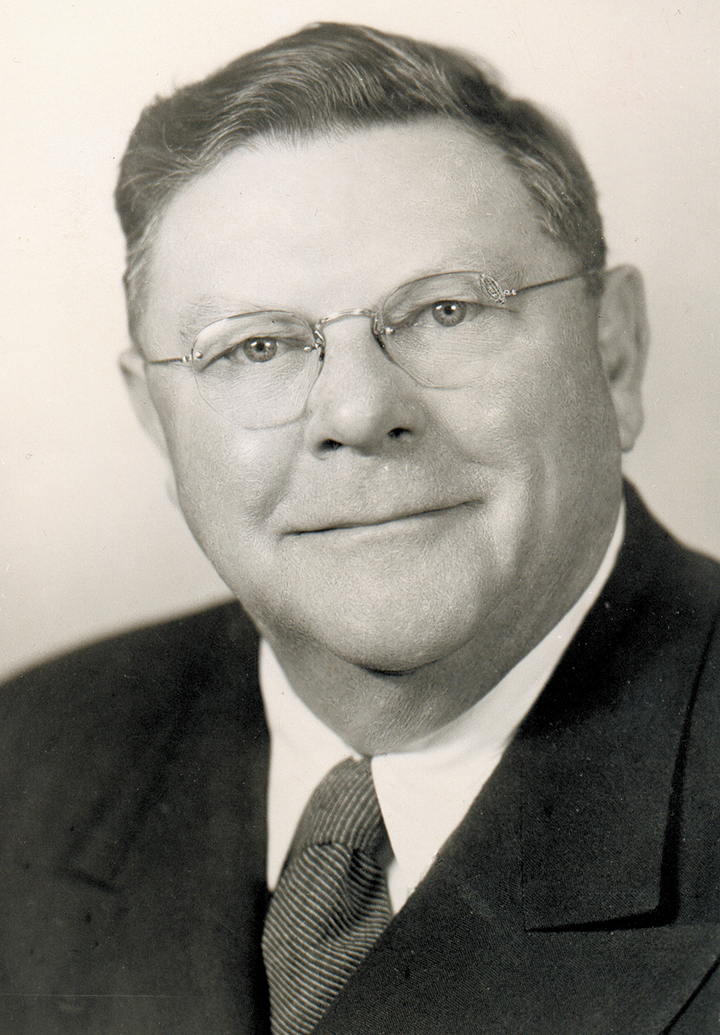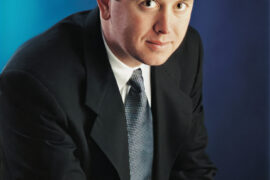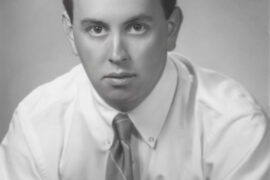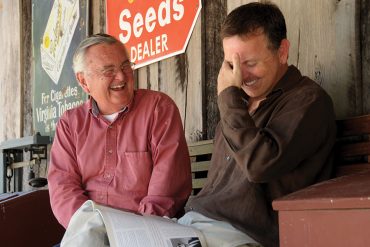By James E. Casto
HQ 43 | WINTER 2002
In the 1930s and ’40s, New York City Mayor Fiorello LaGuardia’s boundless energy and enthusiasm made him a nationally known – and immensely popular – figure. Often called “The Little Flower,” the English translation of his Italian first name, LaGuardia was elected mayor of New York in 1934 and was twice re-elected before deciding in 1945 that he wouldn’t run again.
A bit more than a decade later, Huntingtonians would begin applying the same nickname, “The Little Flower,” to one of their own mayors.
Huntington’s Walter W. Payne not only displayed the same kind of energy and enthusiasm as LaGuardia, he also was built along much the same lines. Both were short in stature and stocky in build. The comparison with the popular New York mayor was obvious.
Many, if not most, of Huntington’s mayors since the city’s founding in 1871 have passed into anonymity. Not Payne, who surely was one of the most colorful mayors in the city’s history. He was also one of the oldest. A Democrat, Payne was 68 years old when he was elected mayor in 1948. He was re-elected to a second two-year term in 1950.
His pay for running what was then West Virginia’s largest city: a handsome $4,500 a year.
With his seemingly limitless energy, Payne loved to be in the thick of things, whether it was a late-night debate at City Hall or a three-alarm fire somewhere. As mayor, he felt a special kinship with the Huntington Fire Depar tment. He frequently donned the heavy coat, distinctive helmet and rubber boots of a fireman and chased the fire trucks to the scene of a blaze. At the fire, he generally confined himself to crowd control but more than once was known to bark a command when he thought a fireman wasn’t doing what needed to be done.
Payne’s father and grandfather before him were in the milling business in Chillicothe, Ohio, and as a young man the future mayor traveled much of the United States as a salesman for a milling company. In 1910 he came to Huntington and opened a feed and builders supply business on West 14th Street, which he successfully operated until 1948.
Over the years, Payne became very interested in the Boys’ and Girls’ Club of Huntington. And so, when he sold his feed business to a national firm, he donated the handsome brick building where it was located to the Boys’ and Girls’ Club, which still occupies it. Giving his building to the boys and girls of the community came naturally to a man who, each December, could be counted on to play the role of Santa at holiday gatherings.
When he sold his business, Payne had planned to retire and spend time hunting and fishing, but he was persuaded to run for mayor instead. He long had been interested in politics but had never sought elected office. Over the years, however, he had been extremely active in civic affairs.
He was president of the Huntington Chamber of Commerce in 1930 and of the Huntington Rotary Club from 1929 to 1931. He was president of the West Huntington Commercial Club for two terms and helped found the West Virginia Association of Feed and Flour Manufacturers, which he headed for four terms.
He was an Elk, a Red Man, a Mason, a Shriner and a member of the Huntington chapter of the United Commercial Travelers.
Payne served on the draft board during the World War II years and was a member of the Huntington Fire Civil Service Commission for 10 years. In addition to his passion for fire trucks, Payne had a lifelong love of circuses. He was a member of the Circus Fans Association of the World and often attended its national conventions.
He first became associated with circus people in the course of supplying feed and other supplies to the traveling shows. Not always welcome in some communities, circus folks often were viewed with suspicion, if not outright mistrust, but Payne delighted in their company, describing them to one newspaper interviewer as “an outstanding group of people.”
Payne had little in the way of formal education but more than made up for that by, as an adult, undertaking a broad program of reading, including philosophy and psychology. He was a talented raconteur, with a seemingly inexhaustible supply of stories, some of which he had picked up while traveling the country and others shared with him by his circus friends.
After he left office as mayor, Payne worked in the 1950s as the unpaid director of the county’s Civil Defense Program, an important activity in that era when students were taking part in air-raid drills and homeowners were being urged to construct bomb shelters in their basements or back yards.
He died in 1961 at age 81. On his death, The Huntington Advertiser eulogized Payne as one of Huntington’s “most colorful, most entertaining, most respected and most widely known citizens.”
Today, Walter Payne is remembered, not as a mayor who built big buildings or accomplished great political feats, but as a man who loved life and his adopted hometown and did his best to kindle that same kind of appreciation in the hearts and minds of his fellow citizens. No small legacy.





